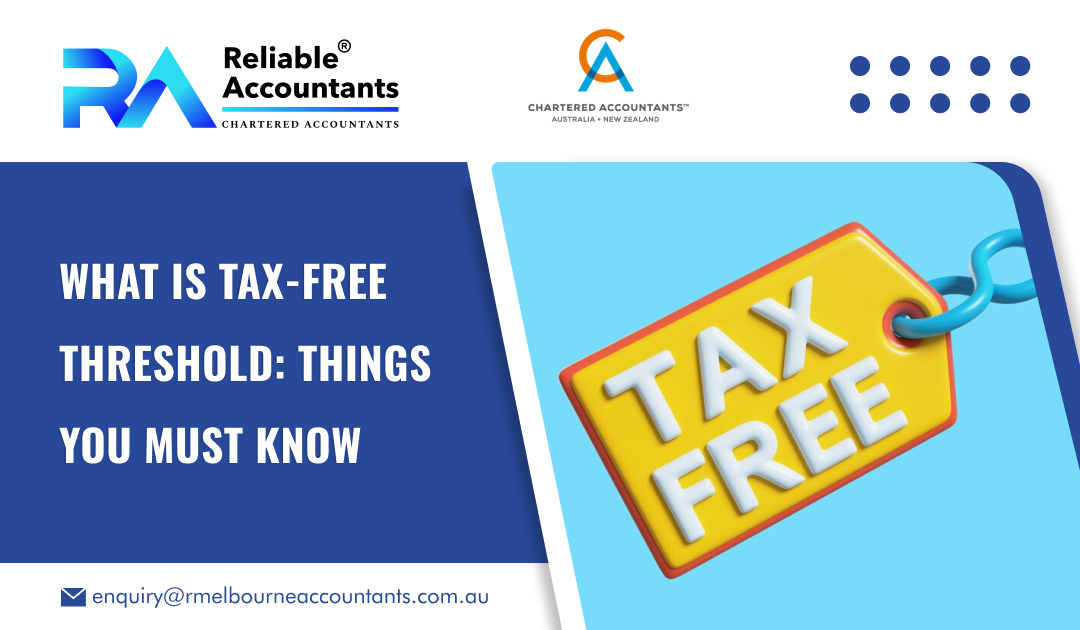Before you lodge a tax return, you must know how much you need to pay, and whether your income is exempt from taxation. Read this blog to know the tax free threshold meaning. Let’s get started:
What is Tax-Free Threshold?
The tax-free threshold is the amount of money you can earn before you pay tax. You don’t need to pay any income tax to the ATO if your total annual income is less than the tax-free threshold. According to the ATO, your income is the aggregated income you made from all jobs and other income sources. It includes interest you received from bank savings and income from any investments. Your income also includes any contracting, consulting or side jobs.
If your income is less than the tax-free threshold but the tax was withheld from your income, ensure you still lodge a tax return, as you must get all the tax you paid during the year back as your tax refund. $18,200 is tax-free threshold for 2024.
Do You Want to Claim the Tax-Free Threshold from this Payer?
Having more than one payer at the same time will allow you to claim the tax-free threshold from one payer. Generally, you claim the tax-free threshold from the payer who pays you the highest wage or salary. You may get a salary from 2 or more payers at the same time if you:
- have a second job or more than 2 jobs
- have a part-time job and get a taxable pension or government allowance
- are working under an ABN as a sole trader, a contractor or other business structure.
Should I Claim a Tax-Free Threshold?
The answer is yes. You don’t need to pay tax on the first $18,200 you earn by claiming the tax-free threshold. On the other hand, if you tick “no” on your Tax Declaration Form, you will be taxed at a higher rate. However, during tax season, your income tax will be calculated depending on your total income, so you will get back the extra tax you paid throughout the year.
What Happens If I Don’t Claim the Tax-Free Threshold?
If you don’t claim the tax-free threshold for a financial year, you may have to pay income tax on all the money you make. This will likely result in paying more tax than necessary during the year, as Australia’s income tax brackets and rates assume you do claim the tax-free threshold to avoid paying tax on the first $18,200 you earn.
Can You Claim the Tax-Free Threshold on 2 Jobs?
You are allowed to claim a tax-free threshold from one employer who pays you the highest salary. When you do multiple jobs and expect to make above $18,200 from all sources, you must advise your other payers to withhold tax from your earnings at a higher rate. This is the ‘no tax-free threshold’ rate. You must complete and lodge a PAYG withholding variation application. Your request must be in writing, but you can send it as a paper, email or online form. Doing this minimises the chance of you having a tax bill at the end of the income year.
What If You Change Jobs During the Income Year?
If you change jobs during the income year, your previous payer stops paying you, which means you will no longer be able to claim the tax-free threshold from them. You can claim the tax-free threshold from your newer employer even if you’ve claimed it from your previous payer.
To decide whether to claim the tax-free threshold from your new employer, complete a tax file number (TFN) declaration. Your employer will determine how much tax to withhold from your payments. We will calculate your total tax payable at the end of the income year when you file your tax return.
Conclusion
Now you know the meaning of a tax-free threshold and whether you can claim a tax-free threshold or not. Moreover, if you are unaware of how to claim a tax-free threshold, you can get help from Reliable Melbourne Accountants.
More Useful Links:
Tax Agent Melbourne
Bank Reconciliation Statement
What is the Minimum Wage in Australia in 2024?

